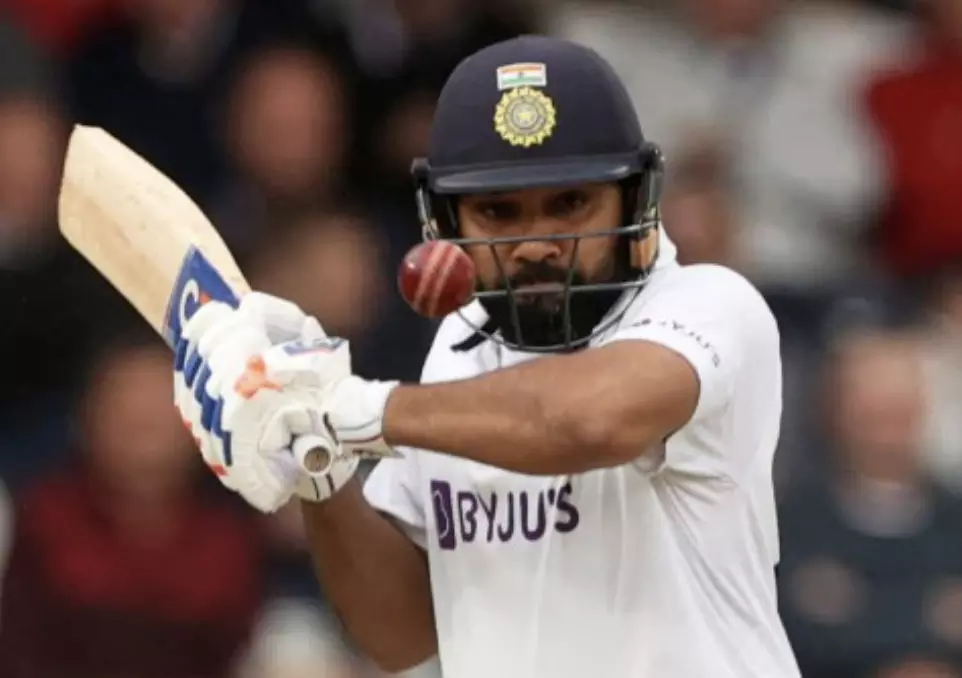‘Hitman’ Bows Out: Rohit Sharma’s test legacy will be one of unfinished brilliance
‘Hitman’ Bows Out: Rohit Sharma’s test legacy will be one of unfinished brilliance

For fans of Rohit Sharma, his Test cricket legacy will forever be a tale of beauty tinged with longing — a career that promised so much, delivered moments of genius, but often left supporters yearning for more.
When Sharma’s elegant timing met his natural grace, he was pure poetry in motion — arguably the most aesthetically pleasing batter of his generation. But when those elements didn’t align, frustration took hold. His was a career that oscillated between sublime highs and bewildering lows. For some, it may have felt unfair. But players like Sharma — gifted, enigmatic, and effortless — tend to leave fans greedy.
The final act came quietly. Sharma will not lead India in the upcoming Test series against England. His last major knock came during India’s dismal tour of New Zealand in October. Chasing a modest fourth-innings total after a first-innings collapse, Sharma had offered a glimpse of revival with a fluent 52. It ended cruelly, the ball ricocheting off the Chinnaswamy turf to disturb the stumps. That flicker of hope was extinguished, and the match — and eventually the series — slipped away.
The murmurs questioning his place grew louder after India’s 3-0 drubbing in that series. They turned into a chorus after another forgettable outing in Australia, where Sharma missed the opener and chose to step aside before the final Test. That 52 in Bengaluru would be the last significant entry in his Test ledger.
But to measure Sharma’s contribution merely by his inconsistencies would be unjust. His red-ball record — 4,300 runs, 12 centuries, 18 half-centuries, a highest score of 212, and a debut hundred — secures him a place among India’s elite. He won Player of the Match in his first Test, Player of the Series in his first series, and proved his mettle even when critics wrote him off.
The turning point in his Test career came, ironically, after a prolonged struggle. Nearly seven years post-debut, Sharma was asked to open the innings — a role considered perilous. He responded with back-to-back centuries against a fearsome South African pace attack, including Vernon Philander and Kagiso Rabada. As an opener, he notched up nine centuries and averaged nearly 43 — a remarkable transformation for someone once pigeonholed as a white-ball maestro.
Sharma’s story is steeped in Mumbai cricket folklore. Raised in the bylanes of Dombivli, he moved to Borivali to stay closer to the maidans after his family scraped together funds for his training. Initially noticed for his off-spin, Sharma’s true potential revealed itself with the bat. Coaches like Dinesh Lad, who later received the Dronacharya Award, saw the magic in his lazy elegance. Cricketing legends such as Dilip Vengsarkar were brought in to witness the prodigy, who soon earned his place in Mumbai’s rich batting legacy.
Rohit Sharma embodied the fusion of the classic and the contemporary — as capable of textbook cover drives as he was of nonchalantly clearing the ropes. He may not have conquered every challenge in Test cricket, but when he was on song, few were more pleasing to watch.
Now, as the curtains fall on his Test career, fans will remember the dazzling stroke play, the effortless sixes, and the times he made batting look absurdly easy. They’ll also remember the 'what-ifs' — the centuries that never came, the tours that fell flat.
For better or worse, Rohit Sharma leaves behind a Test career that — like his most elegant cover drive — will live long in memory, even if it never quite reached its final destination.

